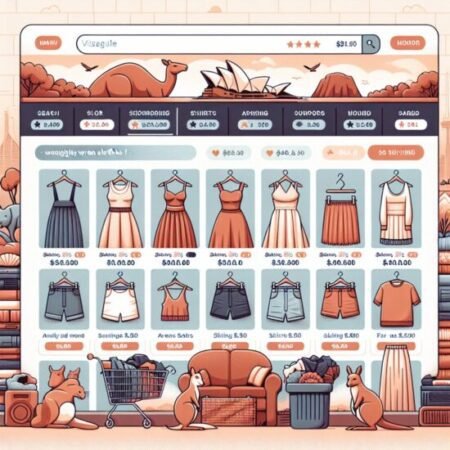
Introduction to Sell Second Hand Clothes Online in Australia
The second-hand clothing market in Australia is becoming more popular, with both sellers and buyers showing interest. As a seller, getting rid of your used clothes not only clears up space in your wardrobe but also gives you a chance to make some money. Moreover, selling second-hand clothes supports sustainable fashion practices by reducing textile waste and promoting the circular economy.
When it comes to selling second-hand clothes online in Australia, there are several platforms that offer unique advantages and cater to diverse audiences. From the convenience of Facebook Marketplace to the curated fashion experiences on Poshmark, these platforms provide sellers with the opportunity to reach a wide pool of potential buyers. Understanding the benefits of each platform and how to optimize your listings can significantly impact your success as a seller.
1. Facebook Marketplace

Facebook Marketplace is the go-to platform for selling second-hand clothes in Australia. With its large user base and easy accessibility, it offers a great opportunity to reach potential buyers. Here’s a detailed look at why Facebook Marketplace is so popular and some tips to make the most of it:
Benefits and Features of Using Facebook Marketplace for Selling Clothes
- Vast Audience: Facebook has over 16 million active users in Australia, making it a prime platform to showcase your pre-loved clothing items to a wide audience.
- Ease of Use: Listing an item on Facebook Marketplace is simple and straightforward. You can create a listing directly from your profile, add multiple photos, provide a detailed description, and set your desired price.
- Local Targeting: The platform allows you to target buyers in specific areas or suburbs, increasing the chances of finding interested local buyers who can easily pick up the items.
- No Transaction Fees: Unlike some other online platforms, Facebook Marketplace doesn’t charge any fees for listing or selling items, making it a cost-effective option for sellers.
Tips to Optimize Your Listings for Quick Sales on Facebook Marketplace
- High-Quality Photos: Take clear and well-lit photos that accurately represent the condition and details of your clothing items. Include different angles and close-ups if needed.
- Compelling Descriptions: Write detailed descriptions that highlight the unique features, size, condition, and any other relevant information about the garment. Use keywords that potential buyers might search for.
- Competitive Pricing: Research similar items on Facebook Marketplace or other platforms to ensure your pricing is competitive. Consider offering discounts or bundle deals to attract more buyers.
Ensuring Safe Transactions on the Platform
- Communicate through Messenger: Use Facebook Messenger to communicate with potential buyers. This allows you to establish trust, answer questions promptly, negotiate prices, and arrange pickup or delivery details.
- Meet in a Safe Location: When meeting up with buyers, choose a public place during daylight hours. If possible, bring a friend along or let someone know about the meeting. Some sellers even choose to meet at the police station as an extra safety precaution (source).
- Cash or Secure Payment Methods: Accept cash for in-person transactions. For online payments, consider using secure methods like PayPal or bank transfers to protect yourself and the buyer. It’s important to ensure safe payment methods when selling on Facebook Marketplace; platforms like Zelle may not be the safest option for receiving payments (source).
By leveraging the benefits and features of Facebook Marketplace, optimizing your listings, and following safety precautions, you can effectively sell your second-hand clothes in Australia. To further enhance your understanding of selling on Facebook Marketplace, you may find this resource helpful as well.
2. Gumtree
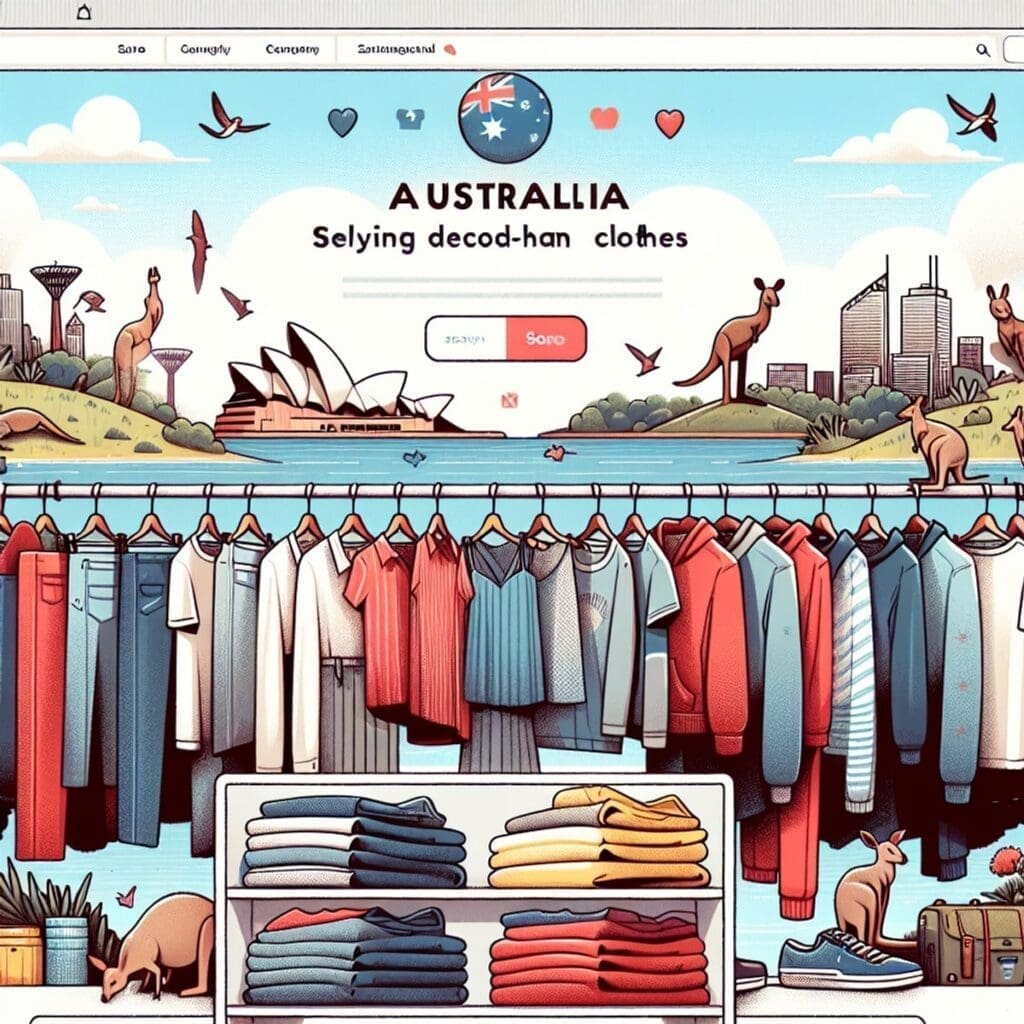
Gumtree is another major player in the Australian market for selling used clothes online. It offers several advantages for selling your wardrobe items, including:
- Wide Audience: Gumtree has a large and diverse user base, which can increase the visibility of your listings and attract potential buyers from different demographics.
- Local Focus: The platform allows you to connect with local buyers, making it convenient for both parties to arrange viewings, pickups, or deliveries.
- Free Listings: Gumtree typically does not charge a fee for listing items, enabling you to list and sell your second-hand clothes without incurring additional costs.
To effectively attract buyers on Gumtree, consider implementing the following strategies:
- Craft Compelling Product Descriptions: Provide detailed and accurate descriptions of your clothing items, including size, fabric, condition, and any unique features. Clear communication can help build trust with potential buyers.
- High-Quality Images: Take clear and well-lit photos of your clothes from multiple angles to showcase their condition and style. Visual appeal can significantly impact a buyer’s decision.
- Leverage Facebook Marketplace as well: With its wide reach and user-friendly interface, it can be an excellent additional platform to expand your customer base.
- Competitive Pricing: Research similar listings on Gumtree to determine competitive pricing for your items. Offering fair prices can make your listings more attractive to potential buyers.
By leveraging Gumtree’s broad reach and implementing effective selling strategies such as writing compelling product descriptions and considering Facebook Marketplace as an additional platform, you can enhance your success in selling used clothes online in Australia.
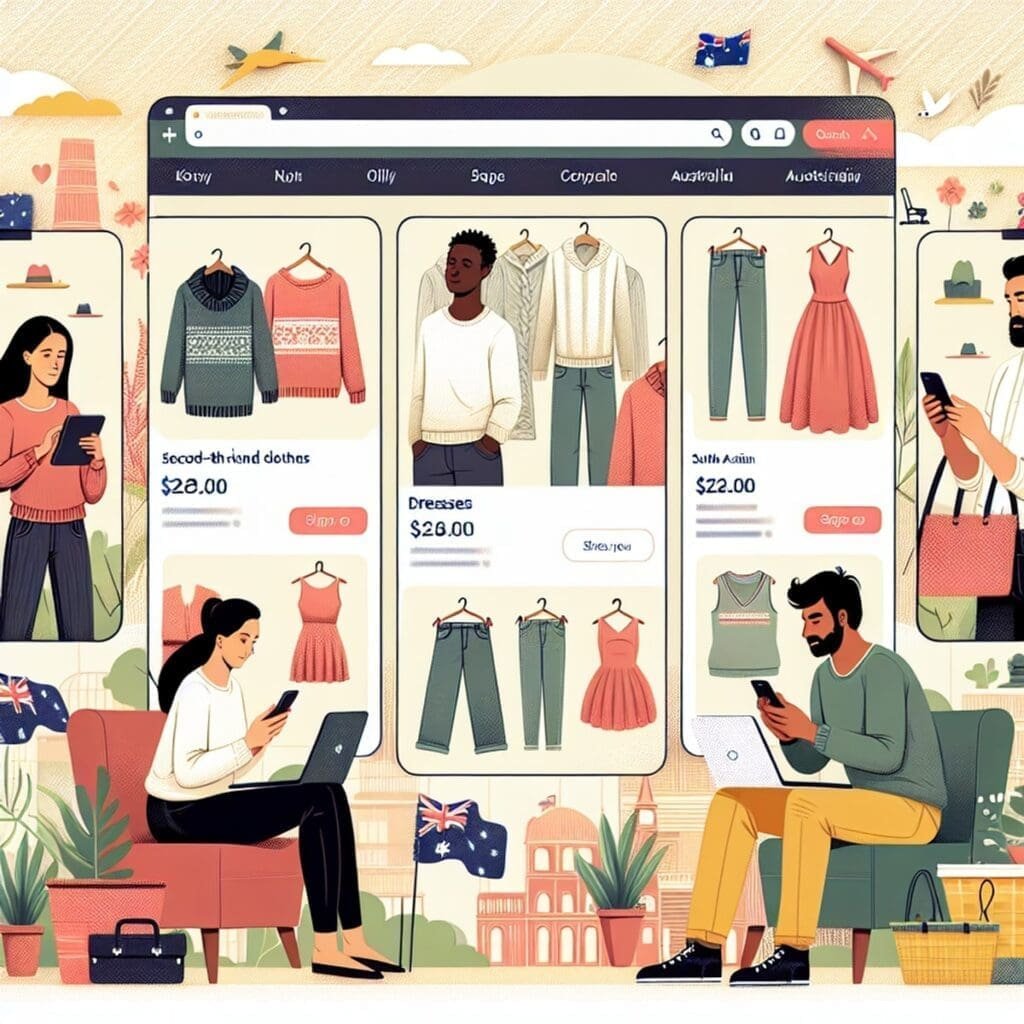
3. eBay
eBay is a well-established online marketplace that offers a wide range of products, including second-hand clothing. As one of the most popular e-commerce platforms in Australia, eBay provides ample opportunities for sellers to reach a large customer base looking for pre-loved fashion items.
Why Choose eBay for Selling Clothes?
Here are some key features that make eBay a viable option for selling clothes:
- Wide Reach: With millions of active users, eBay allows you to connect with potential buyers from all over Australia. This broad reach increases your chances of finding interested customers for your second-hand clothing.
- Seller Tools: eBay provides various seller tools to help you optimize your listings and attract buyers. These tools include the ability to create detailed product descriptions, set competitive prices, and promote your listings for increased visibility.
- Buyer Trust: eBay has built a reputation as a trustworthy platform for online transactions. Buyers often feel more confident purchasing from established sellers on eBay due to the buyer protection policies and feedback system in place.
Tips for Successful Selling on eBay
To have a successful selling experience on eBay, consider the following guidelines:
- Accurate Descriptions: Provide clear and accurate descriptions of your clothing items, including details about size, condition, brand, and any defects or wear. Be honest and transparent to manage buyer expectations.
- High-Quality Photos: Take high-quality photos that showcase your clothing items from different angles. Good lighting and clear images will attract potential buyers and give them an accurate representation of the product.
- Competitive Pricing: Research similar listings on eBay to determine competitive pricing for your second-hand clothes. Consider factors such as brand, condition, and rarity when setting your prices.
- Fast Shipping: Offer prompt shipping options to provide a positive buying experience for customers. Clearly communicate your shipping policies and ensure timely delivery of sold items.
Remember that building a positive seller reputation on eBay takes time. Provide excellent customer service, promptly respond to inquiries, and resolve any issues that may arise. This will help you establish trust with buyers and encourage repeat business.
By leveraging the wide reach and seller tools offered by eBay, you can effectively sell your second-hand clothes online in Australia and connect with a large customer base.
4. Poshmark
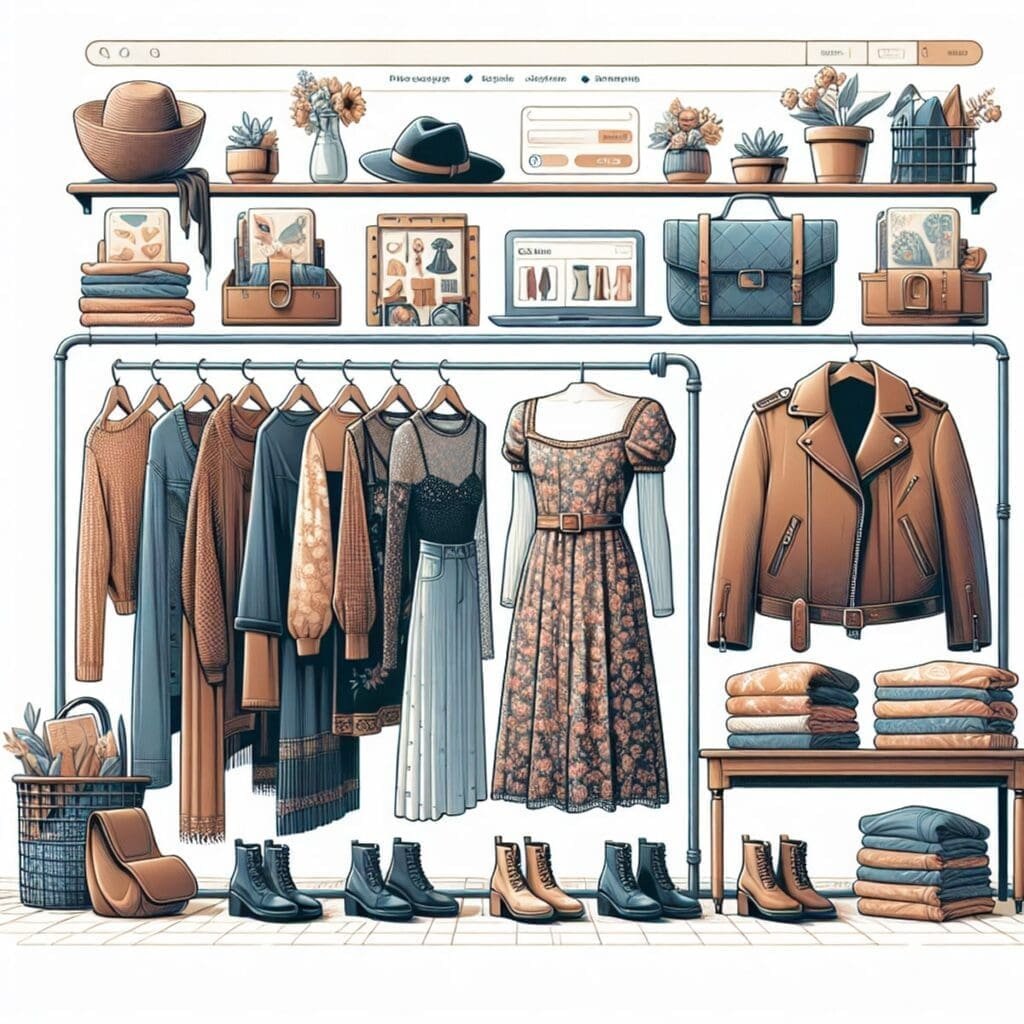
Poshmark is a fashion marketplace that has gained significant popularity among buyers and sellers of second-hand clothes in Australia. It caters to a niche audience interested in curated fashion experiences, making it an ideal platform for those looking to sell unique and high-end clothing items.
Here are some key tips to maximize your sales potential on Poshmark Australia:
- Create eye-catching listings: Poshmark allows you to showcase your items through attractive photos and detailed descriptions. Take high-quality pictures that highlight the key features of your garments and use natural lighting for the best results. Write compelling descriptions that provide information about the brand, size, condition, and any noteworthy details about the item.
- Price competitively: Research similar items on Poshmark to get an idea of the market value for your clothing pieces. Consider factors such as brand, condition, and rarity when setting your prices. Offering reasonable prices can attract more potential buyers and increase your chances of making a sale.
- Engage with the Poshmark community: Poshmark is not just a platform for buying and selling; it’s also a social community. Interact with other users by following their profiles, sharing their listings, and leaving thoughtful comments on their items. Building relationships with fellow sellers and buyers can help increase your visibility within the platform.
- Participate in Posh Parties: Posh Parties are virtual events where users can buy, sell, and connect around specific themes or categories. Joining these parties can expose your listings to a wider audience who are specifically interested in the showcased items. Make sure to share relevant listings during these events to increase your chances of making sales.
- Provide excellent customer service: Promptly respond to inquiries from potential buyers and be transparent about any flaws or imperfections in your items. Ship orders quickly and package them securely to ensure customer satisfaction. Positive ratings and reviews can help build your reputation as a trustworthy seller on Poshmark.
Remember, each platform has its own unique features and user base. It’s worth exploring multiple platforms to maximize your reach and increase the likelihood of selling your second-hand clothes in Australia.
5. Depop
Depop is a trendy online marketplace that appeals to younger buyers who value originality and self-expression. It offers a space for sellers to showcase their pre-loved clothing in a way that attracts this specific group of people.
Meeting the needs of younger buyers
Depop focuses on a specific group of people who are interested in finding unique fashion items, vintage pieces, and a more personalized way of shopping. This platform is perfect for sellers who have one-of-a-kind clothing, accessories, and styles to offer.
Establishing a strong presence on Depop as an Australian seller
To be successful as a seller on Depop in Australia, there are some key strategies to keep in mind:
- Create visually appealing listings: Use high-quality photos that highlight the details of your items. Pay attention to lighting and composition to make your products stand out. You can even leverage tools like Adobe Express to enhance your product images.
- Write compelling descriptions: Describe your items in a way that captures attention and speaks to the style preferences of Depop users. Take inspiration from resources like Hubspot’s content creation guide to craft engaging descriptions.
- Use relevant hashtags: Research popular hashtags within the Depop community and incorporate them into your listings. This will help potential buyers discover your items.
- Engage with the community: Follow other users, like their posts, and leave thoughtful comments. Building connections with fellow Depop enthusiasts can lead to more exposure for your shop. Platforms like Hootsuite can help you manage your social media presence effectively.
- Offer competitive pricing: Take into account the condition, brand, and original price of your items when setting prices. Offering fair deals can attract more buyers.
By understanding what appeals to Depop’s user base and tailoring your approach accordingly, you can effectively tap into this thriving market for second-hand fashion in Australia. Additionally, consider leveraging resources on how to build an online community to foster a loyal customer base on the platform.
Other In-Person Selling Options
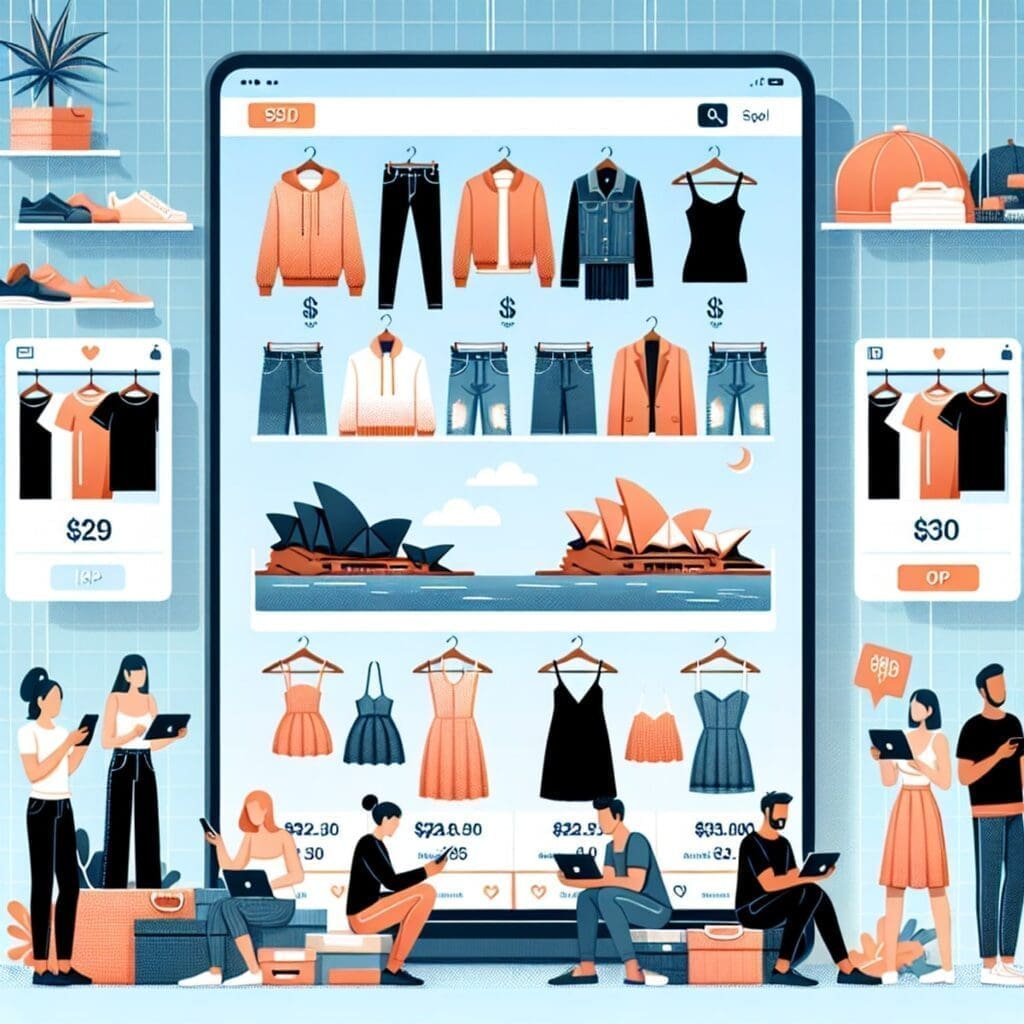
When it comes to selling pre-owned fashion in Australia, there are offline avenues that you can explore in addition to online platforms. Consignment stores, clothing exchanges, and markets offer unique opportunities to connect with buyers and sell your second-hand clothes. Here’s a closer look at these options:
1. Consignment Stores
Consignment stores are brick-and-mortar shops that accept second-hand clothing from individuals and sell them on their behalf. Here are the pros and cons of selling your clothes through consignment stores:
Pros
- Convenience: Consignment stores handle the selling process for you, including pricing, display, and customer interactions.
- Established Customer Base: Consignment stores often have a loyal customer base who visit regularly in search of unique finds.
- Expertise: Store staff can provide guidance on pricing and styling.
Cons
- Commission Fees: Consignment stores typically charge a commission on each item sold, reducing your profit margin.
- Limited Control: You have limited control over pricing and how your items are displayed.
2. Clothing Exchanges
Clothing exchanges are events where people bring their unwanted clothes and exchange them for items brought by others. These events can be organized by local communities or fashion enthusiasts. Here’s what you need to know about clothing exchanges:
Pros
- Sustainability Focus: Clothing exchanges promote the reuse of clothing, reducing textile waste and supporting sustainable fashion practices.
- Networking Opportunities: You can connect with like-minded individuals who share an interest in second-hand fashion.
- Access to Unique Pieces: Clothing exchanges often offer a wide variety of styles and brands.
Cons
- Limited Selling Potential: While you can swap your unwanted clothes, there is no guarantee of making cash from the exchange.
- Time Investment: Organizing or participating in clothing exchanges may require time and effort.
3. Markets
Markets provide a platform for sellers to showcase and sell their second-hand clothes directly to customers. These can be local flea markets, fashion markets, or specialized vintage markets. Consider the following when selling at markets:
Pros
- Direct Interaction: Selling at markets allows you to engage with customers face-to-face, build relationships, and showcase the uniqueness of your items.
- Instant Payment: Customers pay you directly, eliminating the need for intermediaries.
- Potential for Higher Prices: You may be able to charge higher prices for your items compared to online platforms.
Cons
- Limited Reach: The number of potential buyers may be limited to those attending the market.
- Time and Logistics: Setting up a stall and participating in markets can require time, effort, and logistical planning.
By exploring these offline avenues in addition to online platforms, you can maximize your chances of selling your pre-owned fashion items in Australia. Each option has its own benefits and considerations, so choose the one that aligns with your goals and preferences.
Tips for Successful Online Sales of Second Hand Clothes
When it comes to selling second-hand clothes online, there are some essential strategies you can employ to enhance your listings and attract buyers on any platform. From taking enticing product photos to writing compelling descriptions, here are some tips for successful online sales of second-hand clothes:
- High-Quality Photos: Ensure that you take clear and well-lit photos of your items. Use natural light or a lightbox to showcase the colors and details accurately. Consider including multiple angles and close-ups of any unique features.
- Detailed Descriptions: Write detailed descriptions that include important information about the item such as brand, size, condition, and any flaws or alterations. Be honest and transparent about the condition of the garment to manage buyer expectations.
- Effective Use of Platform Messaging: Communication plays a vital role in successful online sales. Respond promptly to inquiries and provide additional information or measurements if requested. Use the platform’s messaging features to build trust with potential buyers.
- Safety Precautions: When selling second-hand clothes online, it’s important to prioritize safety. Never share personal information such as your address or phone number publicly. Opt for secure payment methods like PayPal or direct bank transfers instead of cash transactions.
- Shipping Considerations: Clearly outline your shipping policies, including options for domestic and international shipping if applicable. Provide estimated delivery times and consider offering tracking services for added peace of mind.
- Pricing Strategy: Research similar listings to get an idea of the market value for your items. Price them competitively but also consider factors like brand reputation, condition, and rarity.
Remember, creating an attractive listing goes beyond just the visual appeal; it’s about providing accurate information and fostering trust with potential buyers. By following these tips, you can optimize your online sales experience and increase your chances of selling your second-hand clothes effectively.
Promoting Secondhand Fashion for Environmental Impact
The second-hand clothing market plays a crucial role in reducing textile waste and promoting sustainability in the fashion industry. By buying and selling pre-loved garments, you can contribute to a more environmentally friendly future. Here are some ways to promote secondhand fashion for its positive impact:
- Creating awareness about reducing textile waste: Educate others about the detrimental effects of fast fashion and the importance of extending the lifespan of clothing. Many people are unaware of the environmental impact of clothing production and disposal. By spreading awareness, you can encourage more individuals to consider secondhand options.
- Supporting local Australian labels and sustainable brands: When buying and selling vintage fashion, focus on supporting local businesses that prioritize sustainability. Look for Australian labels that use eco-friendly materials, ethical production practices, or promote circular fashion. By choosing these brands, you are not only reducing waste but also supporting a more sustainable fashion industry.
- Encouraging conscious consumption: Emphasize the value in purchasing secondhand clothes rather than always buying new items. Highlight the unique styles, quality, and affordability that can be found in pre-owned garments. By promoting the benefits of secondhand fashion, you can inspire others to make more conscious choices when it comes to their wardrobe.
Remember, every small action counts when it comes to creating a more sustainable future. By actively participating in the second-hand clothing market and promoting its environmental impact, you can contribute to reducing textile waste and supporting a more sustainable fashion industry in Australia.
Conclusion
When you sell second hand clothes online Australia, you not only earn cash but also contribute to a more sustainable future. By leveraging the various online platforms available, you give your pre-loved garments a new life while reducing textile waste and promoting sustainability in the fashion industry.
Whether it’s through Facebook Marketplace, Gumtree, eBay, Poshmark, or Depop, each platform offers unique opportunities to connect with buyers who appreciate the value of second-hand fashion. By tapping into these platforms, you play an active role in reshaping consumer attitudes towards pre-owned clothing and supporting a circular fashion economy.
As you navigate the world of online second-hand clothing sales, remember that every transaction is a small step towards a larger environmental impact. Embrace the journey of selling your wardrobe items as an opportunity to advocate for sustainable practices and support local Australian labels and sustainable brands.
With the right strategies and a commitment to promoting secondhand fashion, you can make a meaningful difference while earning from your sales. So, embrace the potential of online platforms and embark on your journey to sell second-hand clothes online in Australia, knowing that you are contributing to positive change in the fashion industry.
Sell used clothes online in Australia
Second hand clothing for sale
Buy and sell preloved clothes Australia
Online thrift store Australia
Second hand fashion marketplace
Resale clothing platform Australia
Second hand apparel marketplace
Selling vintage clothes online in Australia
Second hand garment resale website
Second hand wardrobe for sale Australia
Second hand clothing marketplace Australia
Second hand clothes trading website
Second hand fashion resale platform
Second hand clothing auction site Australia
FAQs (Frequently Asked Questions)
What are the benefits of selling second-hand clothes?
Selling second-hand clothes not only allows you to declutter your wardrobe and make some extra cash but also contributes to reducing textile waste and promoting sustainability in the fashion industry.
How can I optimize my listings for quick sales on Facebook Marketplace?
To optimize your listings on Facebook Marketplace, make sure to use high-quality photos, provide detailed descriptions, and ensure safe transactions by following the platform’s safety guidelines.
What are the advantages of using Gumtree for selling second-hand clothes?
Gumtree provides a platform for reaching a wide audience of potential buyers and offers effective strategies to attract them. It is a popular choice for selling pre-loved clothes in Australia.
What are the key features that make eBay a viable option for selling clothes?
eBay is a renowned e-commerce site in Australia, providing opportunities for sellers of second-hand fashion. Its key features include a large user base, secure payment options, and guidelines for successful selling experiences.
What are the benefits of selling second-hand clothes?
Selling second-hand clothes not only allows you to declutter your wardrobe and make some extra cash but also contributes to reducing textile waste and promoting sustainability in the fashion industry.
How can I optimize my listings for quick sales on Facebook Marketplace?
To optimize your listings on Facebook Marketplace, make sure to use high-quality photos, provide detailed descriptions, and ensure safe transactions by following the platform’s safety guidelines.
What are the advantages of using Gumtree for selling second-hand clothes?
Gumtree provides a platform for reaching a wide audience of potential buyers and offers effective strategies to attract them. It is a popular choice for selling pre-loved clothes in Australia.
What are the key features that make eBay a viable option for selling clothes?
eBay is a renowned e-commerce site in Australia, providing opportunities for sellers of second-hand fashion. Its key features include a large user base, secure payment options, and guidelines for successful selling experiences.
How can I maximize my sales potential on Poshmark Australia?
To maximize your sales potential on Poshmark Australia, focus on catering to the niche audience interested in curated fashion experiences. Utilize effective marketing strategies and engage with potential buyers to build a strong presence on the platform.
What are some essential strategies to enhance online listings and attract buyers when selling second-hand clothes?
Some essential strategies include taking high-quality photos, providing detailed descriptions, utilizing platform messaging features for smooth communication, and following important safety precautions when conducting transactions online.
